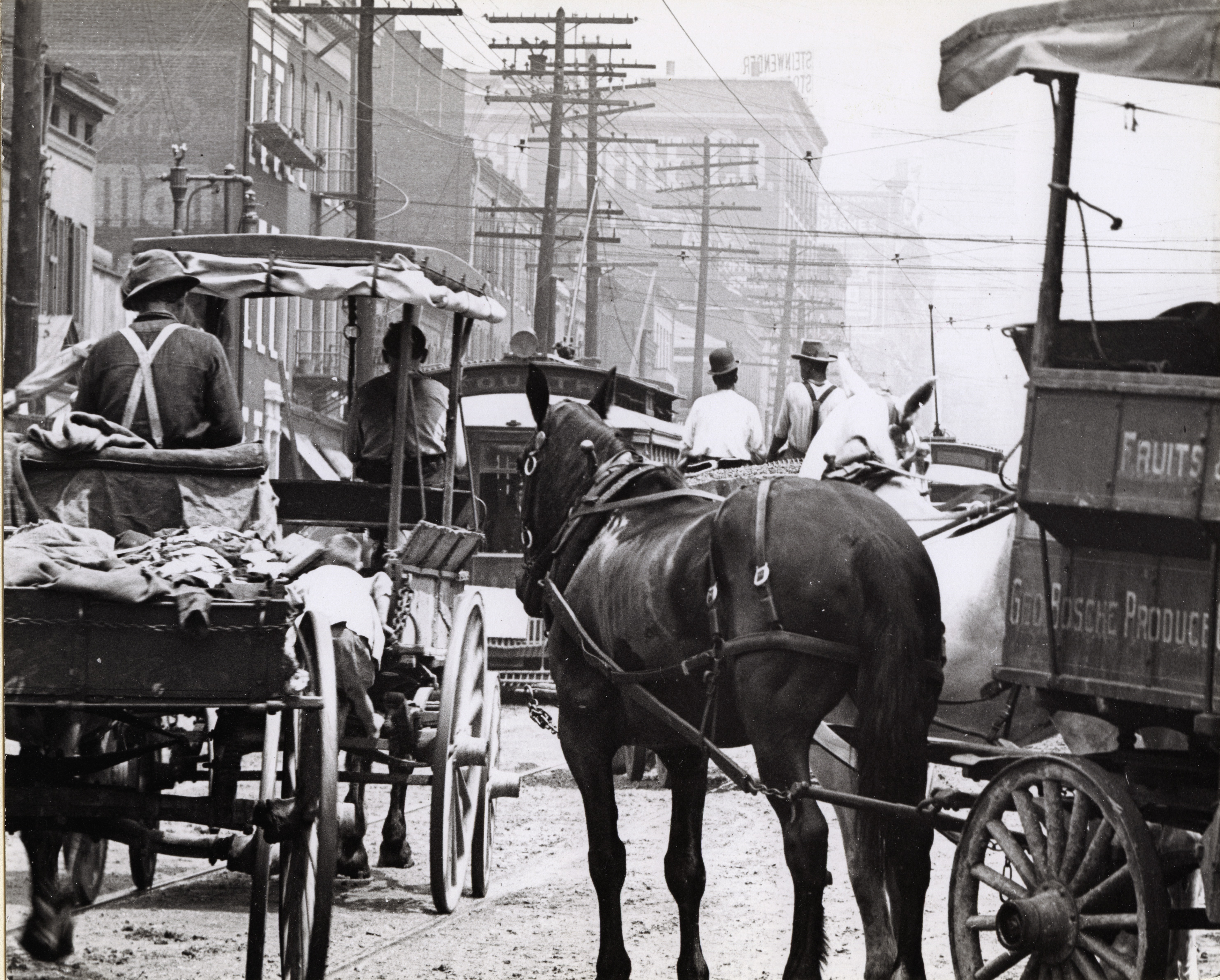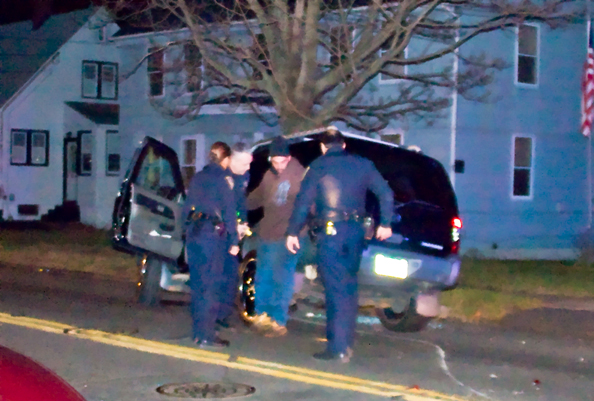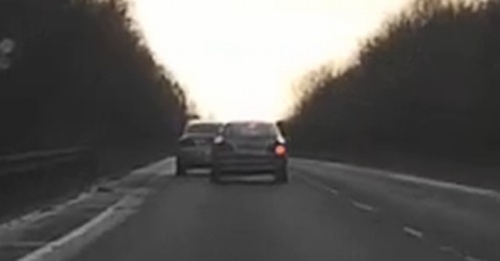|
Driving Etiquette
Driving etiquette refers to the unwritten or unspoken rules that Vehicle, drivers follow. The term dates back to the early 1900's and the use of Carriage, horse-drawn carriages. Driving etiquette typically involves being courteous and staying alert, which varies by vehicle, situation and location (e.g., etiquette for driving an Formula One car, F-1 race car has different rules than driving an Recreational vehicle, RV). Failure to adhere to this behavior can cause an increased risk of legal consequences, Traffic collision, road collisions, Trauma (psychology), trauma and road rage. Driving etiquette can extend beyond in-vehicle actions: When a courteous driver scrapes the fender or inflicts minor damage to a parked car without its owner present, they leave a note giving their name, telephone number, and the name of their insurance company. If the owner is present, the courteous driver exchanges insurance information politely and contacts the proper authorities. Breaches in driving ... [...More Info...] [...Related Items...] OR: [Wikipedia] [Google] [Baidu] |
Vehicle
A vehicle () is a machine designed for self-propulsion, usually to transport people, cargo, or both. The term "vehicle" typically refers to land vehicles such as human-powered land vehicle, human-powered vehicles (e.g. bicycles, tricycles, velomobiles), animal-powered transports (e.g. horse-drawn vehicle, horse-drawn carriages/wagons, ox carts, dog sleds), motor vehicles (e.g. motorcycles, cars, trucks, buses, mobility scooters) and rail transport, railed vehicles (trains, trams and monorails), but more broadly also includes cable transport (aerial lift, cable cars and elevators), watercraft (ships, boats and underwater vehicles), amphibious vehicles (e.g. screw-propelled vehicles, hovercraft, seaplanes), aircraft (airplanes, helicopters, glider (aircraft), gliders and aerostats) and space vehicles (spacecraft, spaceplanes and launch vehicles). This article primarily concerns the more ubiquitous land vehicles, which can be broadly classified by the type of contact interface with ... [...More Info...] [...Related Items...] OR: [Wikipedia] [Google] [Baidu] |
Vehicle Horn
A horn is a sound-making device installed on motor vehicles, trains, boats, and other types of vehicles. The sound it makes usually resembles a “honk” (older vehicles) or a “beep” (modern vehicles). The driver uses the horn to warn others of the vehicle's presence or approach, or to call attention to some hazard. Motor vehicles, ships and trains are required by law in some countries to have horns. Trams, trollies, streetcars, and even bicycles are also legally required to have an audible warning device in many areas. Types Motor vehicles Modern car horns are usually electric, driven by a flat circular steel diaphragm that has an electromagnet acting on it in one direction and a spring pulling in the opposite direction. The diaphragm is attached to contact points that repeatedly interrupt the current to that electromagnet causing the diaphragm to spring back the other way, which completes the circuit again. This arrangement opens and closes the circuit hundreds of ... [...More Info...] [...Related Items...] OR: [Wikipedia] [Google] [Baidu] |
Driving
Driving is the controlled operation and movement of a land vehicle, including cars, motorcycles, trucks, and buses. A driver's permission to drive on public highways is granted based on a set of conditions being met, and drivers are required to follow the established Traffic code, road and traffic laws in the location they are driving. The word "driving" has etymology dating back to the 15th century. Its meaning has changed from primarily driving working animals in the 15th century to automobiles in the 1800s. Driving skills have also developed since the 15th century, with physical, mental and safety skills being required to drive. This evolution of the skills required to drive have been accompanied by the introduction of driving laws which relate not only to the driver but also to the driveability of a car. The term "driver" originated in the 15th century, referring to the occupation of driving working animals such as pack or draft horses. It later applied to electric railway d ... [...More Info...] [...Related Items...] OR: [Wikipedia] [Google] [Baidu] |
Traffic
Traffic is the movement of vehicles and pedestrians along land routes. Traffic laws govern and regulate traffic, while rules of the road include traffic laws and informal rules that may have developed over time to facilitate the orderly and timely flow of traffic. Organized traffic generally has well-established priorities, lanes, right-of-way, and traffic control at intersections. ( International Regulations for Preventing Collisions at Sea govern the oceans and influence some laws for navigating domestic waters.) Traffic is formally organized in many jurisdictions, with marked lanes, junctions, intersections, interchanges, traffic signals, cones, or signs. Traffic is often classified by type: heavy motor vehicle (e.g., car, truck), other vehicle (e.g., moped, bicycle), and pedestrian. Different classes may share speed limits and easement, or may be segregated. Some jurisdictions may have very detailed and complex rules of the road while others rely more on drive ... [...More Info...] [...Related Items...] OR: [Wikipedia] [Google] [Baidu] |
Etiquette
Etiquette ( /ˈɛtikɛt, -kɪt/) can be defined as a set of norms of personal behavior in polite society, usually occurring in the form of an ethical code of the expected and accepted social behaviors that accord with the conventions and norms observed and practiced by a society, a social class, or a social group. In modern English usage, the French word ''étiquette'' (label and tag) dates from the year 1750 and also originates from the French word for "ticket," possibly symbolizing a person’s entry into society through proper behavior. There are many important historical figures that have helped to shape the meaning of the term as well as provide varying perspectives. History In , the Ancient Egyptian vizier Ptahhotep wrote '' The Maxims of Ptahhotep'' (), a didactic book of precepts extolling civil virtues such as truthfulness, self-control, and kindness towards other people. Recurrent thematic motifs in the maxims include learning by listening to other people, ... [...More Info...] [...Related Items...] OR: [Wikipedia] [Google] [Baidu] |
Drunk Driving
Drunk driving (or drink-driving in British English) is the act of driving under the influence of alcohol. A small increase in the blood alcohol content increases the relative risk of a motor vehicle crash. In the United States, alcohol is involved in 32% of all traffic fatalities. Terminology United States In the United States, most states have generalized their criminal offense statutes to driving under the influence (DUI). These DUI statutes generally cover intoxication by any drug, including alcohol. Such laws may also apply to operating boats, aircraft, farm machinery, horse-drawn carriages, and bicycles. Specific terms used to describe alcohol-related driving offenses include "drinking and driving", "drunk driving", and "drunken driving". Most DUI offenses are alcohol-related so the terms are used interchangeably in common language, and "drug-related DUI" is used to distinguish. United Kingdom In the United Kingdom, there are two separate offences to do with alcohol a ... [...More Info...] [...Related Items...] OR: [Wikipedia] [Google] [Baidu] |
Lane (road)
In road transport, a lane is part of a roadway that is designated to be used by a single line of vehicles to control and guide drivers and reduce traffic conflicts. Most public roads (highways) have at least two lanes, one for traffic in each direction, separated by lane markings. On multilane roadways and busier two-lane roads, lanes are designated with road surface markings. Major highways often have two multi-lane roadways separated by a median. Some roads and bridges that carry very low volumes of traffic are less than wide, and are only a single lane wide. Vehicles travelling in opposite directions must slow or stop to pass each other. In rural areas, these are often called country lanes. In urban areas, alleys are often only one lane wide. Urban and suburban one lane roads are often designated for one-way traffic. History For much of human history, roads did not need lane markings because most people walked or rode horses at relatively slow speeds. However, when aut ... [...More Info...] [...Related Items...] OR: [Wikipedia] [Google] [Baidu] |
High Beam
A headlamp is a lamp (electrical component), lamp attached to the front of a vehicle to illuminate the road ahead. Headlamps are also often called headlights, but in the most precise usage, ''headlamp'' is the term for the device itself and ''headlight'' is the term for the beam of light produced and distributed by the device. Headlamp performance has steadily improved throughout the automobile age, spurred by the great disparity between daytime and nighttime traffic fatalities: the US National Highway Traffic Safety Administration states that nearly half of all traffic-related fatalities occur in the dark, despite only 25% of traffic travelling during darkness. Other vehicles, such as trains and aircraft, are required to have headlamps. Bicycle lighting, Bicycle headlamps are often used on bicycles, and are required in some jurisdictions. They can be powered by a battery (electricity), battery or a small generator like a bottle dynamo, bottle or hub dynamo. History of autom ... [...More Info...] [...Related Items...] OR: [Wikipedia] [Google] [Baidu] |
Double Parking
Double parking refers to parking parallel to a car already parked at the curb or double parking in attended car parks and garages. Parking parallel to a car already parked at the curb "Double parking" means standing or parking a vehicle on the roadway side of a vehicle already stopped, standing or parked at the curb. ("double parking" is code 46) This often prevents some of the vehicles in the first row from departing and always obstructs a traffic lane or bike lane (to the extent of often making the street impassable in one-way single-lane situations). In some areas, people double parking their cars leave the hand brake off, allowing the ... [...More Info...] [...Related Items...] OR: [Wikipedia] [Google] [Baidu] |
Tailgating
Tailgating is the action of a driver driving behind another vehicle while not leaving sufficient distance to stop without causing a collision if the vehicle in front stops suddenly. The safe distance for following another vehicle varies depending on various factors including vehicle speed, weather, visibility and other road conditions. Some jurisdictions may require a minimal gap of a specified distance or time interval. When following heavy vehicles or in less than ideal conditions (e.g. low light or rain), a longer distance is recommended, due to increased reaction times and stopping distances or because fatigue is most prevalent in long distance lorry driving. Causes There can be several reasons for tailgating. Preventing cut ins Tailgating can occur when a vehicle attempts to prevent another vehicle on the right or left from cutting in front of them. The tailgating (or preventing) vehicle will drive as close as possible to another leading vehicle to prevent the side vehicl ... [...More Info...] [...Related Items...] OR: [Wikipedia] [Google] [Baidu] |
Carriage
A carriage is a two- or four-wheeled horse-drawn vehicle for passengers. In Europe they were a common mode of transport for the wealthy during the Roman Empire, and then again from around 1600 until they were replaced by the motor car around 1900. They were generally owned by the rich, but second-hand private carriages became common public transport, the equivalent of modern cars used as taxis. Carriage suspensions are by leather strapping or, on those made in recent centuries, steel springs. There are numerous names for different types. Two-wheeled carriages are usually owner-driven. Coaches are a special category within carriages. They are carriages with four corner posts and a fixed roof. Two-wheeled war chariots and transport vehicles such as four-wheeled wagons and two-wheeled carts were forerunners of carriages. In the 21st century, horse-drawn carriages are occasionally used for public parades by royalty and for traditional formal ceremonies. Simplified modern versio ... [...More Info...] [...Related Items...] OR: [Wikipedia] [Google] [Baidu] |








